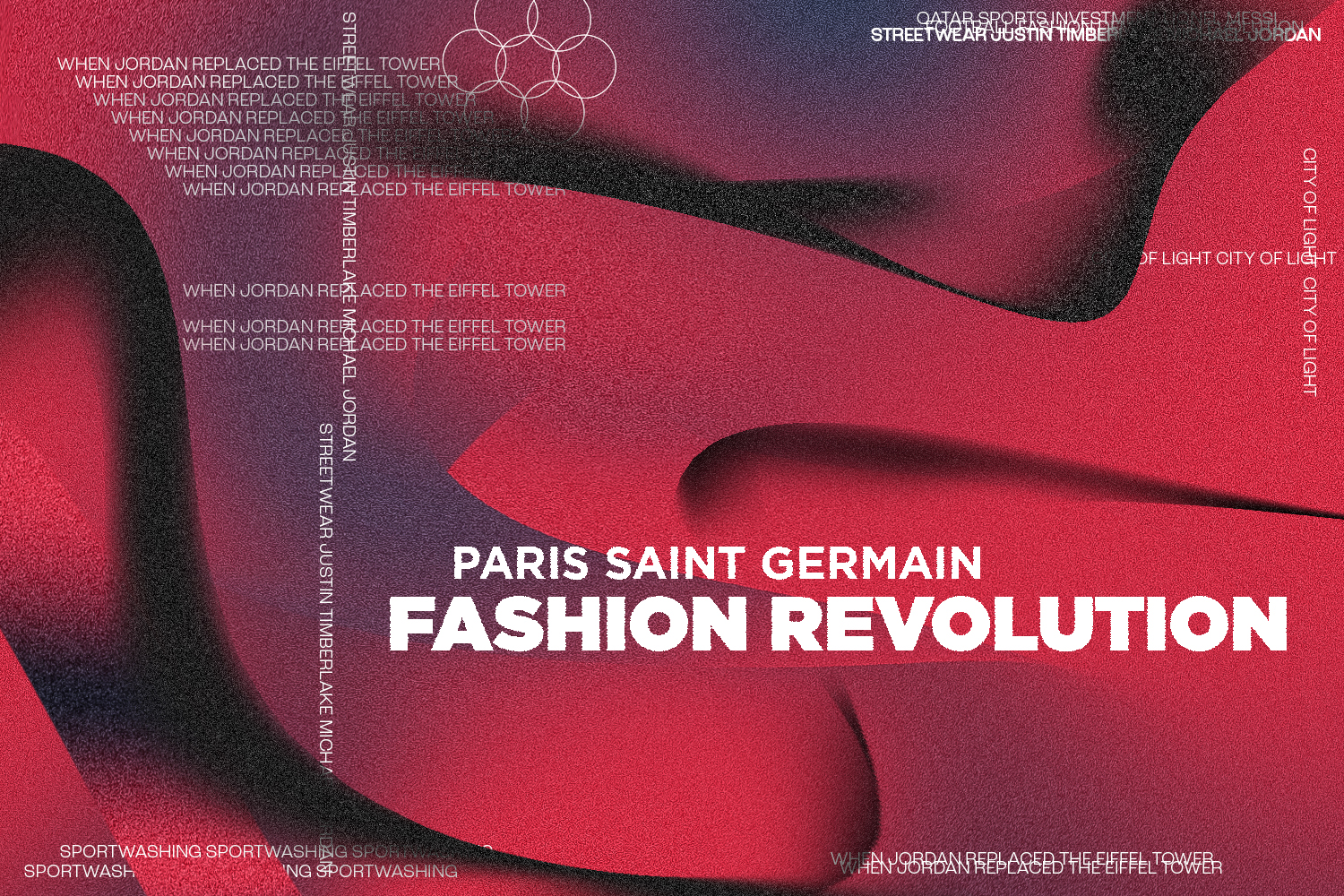When Gustave Eiffel signed an agreement to build a 300-meter iron-lattice tower, a group of prominent French artists published a letter protesting against the “useless and monstrous” tower; claiming Paris would “become irreparably ugly and dishonor itself.” Little did they know that it would take almost 150 years before anyone dared to replace the city of light’s most iconic emblem. And that it would be… on Justin Timberlake’s back?
This is the story of a fashion revolution you’ve never heard about.
In 2012, Qatar Sports Investments (QSI) – a subsidiary of Qatar’s sovereign wealth fund – bought Paris’ local football club Paris Saint Germain (PSG), as part of a much larger – and arguably troubling – trend that has seen rich Middle Eastern nations invest in international sports.
Having an oil-rich nation’s coffers fund, a sports team changed PSG’s fortunes forever. Overnight, they went from being a decent – yet continentally insignificant – team to one of the world’s richest sports organizations. In a culture where money talks, PSG’s new money was here to scream. They spent over 1.5 billion dollars buying the world’s best players in just a decade, making them a tour de force on the pitch. As they learned, though, that was the easy part.
An unintended consequence of their rapid rise was that PSG was now competing with historically successful clubs like Real Madrid, AC Milan, and Bayern Munich that had something new money couldn’t buy: cultural presence.
What outsiders often get wrong about sports is the belief that fans watch sports for the – intoxicating yet arbitrary ‘love of the game.’ In reality, most are there to buy into an identity. When one chooses a team to root for, they’re picking a culture to belong to. Year after year, this culture lives forever, even when time resets for a new season and players move on.
But when you rise to the top as quickly as PSG did – and in the manner they did – you often outrun culture itself. PSG now played like a big team, but they didn’t have the fan base nor history of a big team.
Money also made them – and their star players – hard to root for; in what is, fundamentally, a working-class sport. They weren’t underdogs and new fans had no culture to fall in love with. So the question became, how do you create a culture around Paris’ star-studded team?
Fashion, of course.
In May 2018, reports emerged of a deal between PSG and Nike’s basketball subsidiary Air Jordan. Two months later, Justin Timberlake walked onto the stage of AccorHotels Arena in Paris’ wearing a jacket with a PSG logo where the Eiffel tower silhouette had been edited out for the ‘Jumpman’ logo.
The PSGxNike collaboration was the start of a global streetwear revolution. In America, Sportswear is synonymous with street fashion, but they are a signifier of identity for the rest of the world. What you wear is who you are. And when each team has 3-4 different jerseys every season, you’ve created a self-sustaining multi-billion dollar fashion industry on your hands.
PSG doesn’t just make good jerseys, though. The club has blended sports culture and high fashion, collaborating with collectives and designers worldwide like Hugo Boss, Manish Arora, 3. Paradis, and Stüssy. When other clubs reveal a new jersey, they hold a press conference, and PSG makes its players walk on a runway.
Gustave Eiffel stood by his structure in response to the backlash, and he believed the tower would be a symbol for modern Paris. As a jumping Michael Jordan replaces the Eiffel Tower on the crests of PSG, a new symbol is being announced.
Football fashion is changing. In the last month, English Football player Jack Grealish signed a seven-figure deal with Gucci – following the footsteps of Harry Styles and Jared Leto – while Dominic Calvert Lewin and Mohammed Salah featured on covers of GQ.
Football has always been fashionable, and PSG simply ensured the world paid attention.
Words and Graphics by Aanvik Singh.

